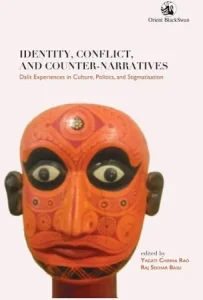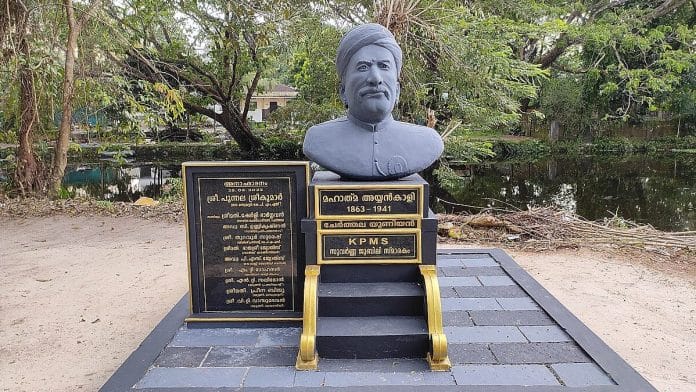At the beginning of the twentieth century, 927 out of every 1,000 Ezhavas in Travancore were illiterate; despite the removal of legal hindrances, Ezhava students were excluded from schools. Even if they were educated, employment opportunities were hard to come by, as they were not recruited into government service.A powerful political awakening had been spurred in Travancore by the 1891 G. P. Pillai-led agitation against the autocratic administration of the state and the denial to native communities of their due share in government jobs.
The agitation, which adopted ‘Travancore for Travancoreans’ as its slogan, finally led to the drawing up of the Travancore Memorial (Malayali Memorial), a petition to the Maharaja signed by Nairs, Ezhavas, and Christians. However, the primary interest underlying the petition was that of the Nair community, and its major grievance was that the native upper castes were not being given adequate representation in the bureaucracy; the discrimination suffered by Ezhavas was only superficially touched on. The reply from the sirkar pointed out that ‘Ezhavas were a [contented] lot and if the government was to adopt a deliberate policy to give them a share in education and administration it would be unproductive and would create tension and strain communal harmony.
Realising that the Malayali Memorial was a failure from their point of view, the Ezhava community, under the leadership of Dr Palpu, submitted in 1895 a lengthy petition, composed in English, to Sankara Subaiyer, the Dewan of Travancore, enlisting the disabilities suffered by them. Another memorandum was submitted to the Maharaja in 1896. Both of these, known as the Ezhava Memorials, demanded entry into government schools and government employment.
In response, the Dewan assured the Ezhavas that they would be granted special schools, but this assurance proved insubstantial; only two primary schools were opened for them. Dr Palpu’s disappointment with the Dewan’s response gave birth to the Ezhava Mahajana Sabha in 1896, but the organisation was unable to gather any significant momentum. It was only with the formation of SNDP in 1903 under the spiritual leadership of Sri Narayana Guru that the Ezhava struggles and demands received a meaningful boost.
The first objective of SNDP was to remove the obstacles in the way of Ezhava admission to government and government-aided schools. Later, the Yogam shifted its focus to establishing its own schools and colleges. Narayan Guru’s motto was ‘Strengthen through organisation, liberate by education,’ and this inspired the Ezhava community; under his guidance, SNDP attracted Ezhavas not only in Travancore but also in Cochin and Malabar.
This does not mean that other communities were not seeking similar possibilities. They, too, organised themselves and began attempting to climb the social ladder, but their role was marginal in this game of power. English education, control over land, and access to government offices were the three variables that affected the status and power of every community at the time.
By the 1930s, education had become a majorly contested political issue; while the lower castes that demanded education were often seeking escape from various forms of elite oppression, upper-caste interest in modern schooling was clearly linked to new opportunities for employment in the rapidly modernising states, the expanding bureaucracy and welfare network, and the economic opportunities emerging in the wake of Kerala’s economic integration with the world-system.
The access enjoyed by different communities across the social spectrum to education, land, and employment was neither even nor characterised by the same calculations of advantage, but education was perceived by everyone as the door to economic upward mobility and the emerging political field. Inevitably, the powerful communities—those with economic clout and/or caste clout—triumphed.
Apart from Protestant missionaries, Syrian Christians also invested a lot in education. By the end of the nineteenth century, we see the Syrian Orthodox Church registering a society to manage and coordinate its educational activities. From the 1880s, Indian Catholics started establishing schools, and they quickly made outstanding progress in this field: between 1882 and 1887, the number of schools under Catholic management increased from around 10 to over 1,000.
Also read: Maheshwari sarees are popular today because of Ahilyabai Holkar’s efforts
A famous Syrian Christian leader of this time period, Father Immanuel Nidhiry, is reported to have said in a speech that an English school would be ‘a more prized asset than the golden crosses of churches’, which could be stolen. Clearly, the church accorded great importance to the matter of investing in education. It is important to note in this regard that Syrian Christians also received assistance in their efforts from the government in the form of liberal grants-in-aid.
The experience of the less powerful communities, however, appears to have been different. The coastal Arayas also initiated efforts at modernisation between the late nineteenth and early twentieth centuries but did not succeed significantly. Despite its early efforts, the Araya reform movement failed to establish an adequate and sustainable network of secular community institutions to promote education and other skills needed for modern political and economic life. A large number of institutions sprang up, but they were short-lived, mainly due to financial constraints.
Meanwhile, Southern Travancore was seized by a different kind of politics. Under the leadership of Ayyankali (1863–1941), Dalits started laying claim to public spaces, including schools. In 1898, Ayyankali, who later became the first Dalit nominated member in Sri Mulam Praja Sabha, broke caste rules by riding his villuvandi (ox cart) from Venganoor to Aralamudu market in Balaramapuram, heralding in a sense a more forceful era of Dalit assertion.
In 1907, Ayyankali established the Sadhujana Paripalana Sangham, a movement that targeted the retrograde practice of keeping the Pulaya away from public roads and marketplaces. Several other Dalit organisations sprang up around the same time: Prathyaksha Raksha Sabha (under Poykayil Yohannan, later known as Kumara Guru Devan), Thiruvathamkoor Paraya Maha Sabha, Sidhanar Service Society, Sambavar Mahasabha, Cheramar Sangathana, and Sathya Vilasini Sangham.
In 1904, the Pulayas under the leadership of Ayyankali set up a school in Venganoor, which came to be considered a milestone in Dalit education, but this school was destroyed by the higher classes. Similarly, a 1910 government order calling for Dalits to be permitted entry into schools was sabotaged by the upper castes in the administration. School authorities, who were landowners, refused to comply with the decision. A March 2, 1910 editorial in Swadeshabhimani likened teaching pupils from both upper and lower castes in the same class to yoking a horse and a buffalo to the same plough.
Ayyankali took a stand against the continuing discrimination, proclaiming, ‘If our children are not allowed into schools, we shall henceforth refuse to work in the field.’ Kerala’s very first farm labour agitation, a landmark struggle led by Ayyankali, was a fight not for livelihood but to learn the alphabet, built around the threat that, if their children were denied education, farmworkers would cut off the supply of grain.
Consequent to this, the government not only permitted school entry to children who came from the suppressed classes but also the opening of schools for these children. However, the collusion of school owners, officials, and certain authorities effectively prevented the implementation of this decision.
 This is an excerpt from ‘Identity, Conflict, and Counter-Narratives: Dalit Experiences in Culture, Politics, and Stigmatisation’, edited by Yagati Chinna Rao and Raj Sekhar Basu, has been published with permission from Orient BlackSwan.
This is an excerpt from ‘Identity, Conflict, and Counter-Narratives: Dalit Experiences in Culture, Politics, and Stigmatisation’, edited by Yagati Chinna Rao and Raj Sekhar Basu, has been published with permission from Orient BlackSwan.






